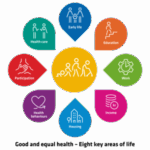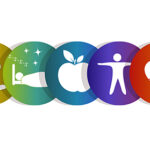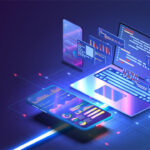Introduction
Imagine a world where your refrigerator orders groceries, your car drives itself to the gas station, and your watch detects a health issue before symptoms arise.
Welcome to the era of the Internet of Things (IoT) — a technology revolution that’s changing the very fabric of our daily lives.
In this blog post, we’ll explore how IoT has evolved, how it’s impacting different industries, the benefits, challenges, and what the future holds.
What Is IoT?
At its core, the Internet of Things is a network of physical objects—devices, vehicles, appliances—that are embedded with sensors, software, and connectivity to exchange data with other devices and systems over the internet.
Examples of IoT Devices:
- Smartwatches
- Smart refrigerators
- Connected cars
- Smart thermostats (like Nest)
- Health monitoring devices
IoT turns everyday objects into “smart” devices, making our environments more responsive, efficient, and interconnected.
How IoT is Transforming Industries
1. Smart Homes
IoT has made smart homes mainstream.
- Voice-activated assistants like Alexa and Google Home control lights, thermostats, and even security systems.
- Smart appliances like refrigerators suggest recipes based on what’s inside.
- Home security cameras offer real-time video monitoring through your smartphone.
Impact: Higher convenience, better energy efficiency, and improved home security.
2. Healthcare
IoT is revolutionizing healthcare through remote monitoring and smart medical devices.
- Wearable devices track heart rate, blood pressure, glucose levels.
- Smart pill bottles remind patients when it’s time to take their medication.
- Telehealth platforms allow doctors to monitor patients remotely.
Impact: Improved patient care, early disease detection, and reduced hospital visits.
3. Transportation
From self-driving cars to connected public transit systems, IoT is transforming how we move.
- Smart traffic lights adjust signals based on real-time traffic data.
- Connected cars warn drivers about upcoming hazards.
- Fleet management systems optimize logistics and reduce fuel usage.
Impact: Safer roads, reduced congestion, and smarter logistics.
4. Smart Cities
Cities worldwide are implementing IoT to become smarter.
- Smart waste management alerts when bins are full.
- Connected energy grids optimize power distribution.
- Real-time parking systems guide drivers to open spaces.
Impact: More efficient resource usage, cleaner environments, better citizen experiences.
Key Benefits of IoT
- Convenience: Automating daily tasks saves time and effort.
- Cost Savings: Energy-efficient systems lower bills.
- Health Monitoring: Early disease detection saves lives.
- Improved Safety: Smart surveillance and real-time alerts prevent accidents and crime.
IoT is enhancing the quality of life across almost every aspect of human activity.
Challenges Facing IoT Adoption
Despite the benefits, IoT faces significant challenges:
1. Security Risks
More connected devices mean more entry points for hackers.
2. Privacy Concerns
Continuous data collection raises concerns about surveillance and misuse.
3. Interoperability
Different manufacturers use different standards, making device compatibility tricky.
4. High Initial Costs
Although savings come later, the upfront cost for smart devices can be high.
Addressing these issues is critical to ensure the safe and effective expansion of IoT.
How Companies Are Tackling IoT Security
- End-to-end encryption to protect data transmission.
- Regular firmware updates to patch vulnerabilities.
- Two-factor authentication for device access.
- Blockchain-based security solutions are emerging to enhance trust.
Security is becoming a priority, not an afterthought, for IoT device makers.
Future of IoT: What’s Next?
The future of IoT is brighter and smarter:
- 5G integration will make devices faster and more reliable.
- Edge computing will allow devices to process data locally, reducing latency.
- AI-powered IoT will allow devices to make autonomous decisions without human intervention.
- Quantum IoT could supercharge security and data processing capabilities.
Experts predict there will be over 75 billion IoT devices by 2030 — meaning almost every object around us will be connected.
Final Thoughts
The Internet of Things is no longer a futuristic concept; it’s here and growing faster every day.
From homes and hospitals to farms and cities, IoT is improving efficiency, saving lives, and creating new opportunities.
However, as with all powerful technologies, it must be handled with care—especially regarding security and privacy.
One thing is clear: the smart world is inevitable. And those who adapt early will lead the future.













